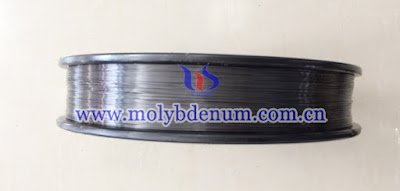Silicon carbide (SiC) heating elements are non-metal high temperature heating element made from high-quality green silicon carbide. Compared with metal electric heating elements, this element has the advantages of high temperature, oxidation resistance, corrosion resistance, long life, and convenient installation and maintenance.
The operating temperature of the silicon carbide heating elements can go up to 1550°C in an oxidizing atmosphere, or inert gas atmospheres of argon or helium. in a reducing atmosphere, the maximum obtainable operating temperature is 1350°C. Nowadays, they are widely used in various high-temperature electric furnaces and electric heating equipment in magnetic materials, powder metallurgy, lithium ion battery components, ceramics, glass, metallurgy and machinery industries.
Our silicon carbide electric heating elements adopt a new production process for the availability of an excellent heat and cold resistance ratio, energy saving and long life. Meanwhile, they can avoid the damage to the furnace body caused by the excessive temperature of the cold zone. Chinatungsten Online manufactures the following types of SiC heaters.
1.Equal-diameter Silicon Carbide Rod
It has the advantages of low resistance, long service life, and energy saving, which is commonly used in rare earth phosphors, electronics, magnetic materials, powder metallurgy, precision casting and other industries, as heating elements for pusher furnaces, mesh belt furnaces, trolley furnaces, and box furnaces.
2. Thick-end SiC Rod
It is an electric heating element composed of a hollow tubular heating part and a thickened end. Meanwhile, it is hard and brittle, resistant to rapid cold and heat, and will not deform under high temperature. Mostly used in test furnaces.
3. U-Shaped Alpha Silicon Carbide Rods
The rod is composed of two equal diameter silicon carbide rods sharing a cold end, and can be connected to the power cord at one end of the kiln. Its surface can be used in the temperature of about 1500 ℃. Given that, it is mostly applied in kilns with high furnace temperature and high furnace temperature uniformity requirements.
4. Gun-shaped SiC Rod
This shape of element is improved from the U-shaped rod by extending 40mm to 60mm length at the U-shaped end to support the rod body. It is matched with double heating element rod to be used in the glass bottle industry to produce soda-lime flat glass.
5. W-shaped Silicon Carbide Rod
The special rod is composed of a common silicon carbide rod connected to one end of three high-purity silicon carbide rods. The joint is also made of the same material, and the structure of the rod is exactly the same so that it can be used for horizontal installation in a float glass cell. Besides that, it can be directly connected to the three-phase power supply and the furnace top can be connected in one direction.
6. H-shaped Silicon Carbide Heating Elements
This heating element is commonly used for heating and heat preservation of forehearths and pot sections in the glass industry. As a non-linear resistor, its resistor has a large dispersion at room temperature.
7. Reaction Bonded Single Spiraled Heating Elements
Single spiraled element is an electronic component specially processed by precise calculation and design on the basis of equal diameter SiC rod. Its using temperature can reach 1500 ℃, used for heating of kilns with special needs. Its characteristics are: more power saving, simple operation, high temperature and long life.
8. Reaction Bonded Double Spiraled Heating Elements
The double spiraled element is an electronic component specially processed by precise calculation and design on the basis of the U-shaped heater. It is designed to meet the small space in the furnace and the normal U-shaped rod cannot be installed in the electric furnace. It is mainly used for the heating of kilns with special needs. Its characteristics are: power saving, simple operation, high temperature and long life.
If you have any inquiry of silicon carbide heating elements, please feel free to contact us:
Tel.: +86 592 5129696/+86 592 5129595
Fax: +86 592 5129797
Scan QR code of Chinatungsten Wechat platform to follow up the daily latest price and market of tungsten, molybdenum and rare earth.






